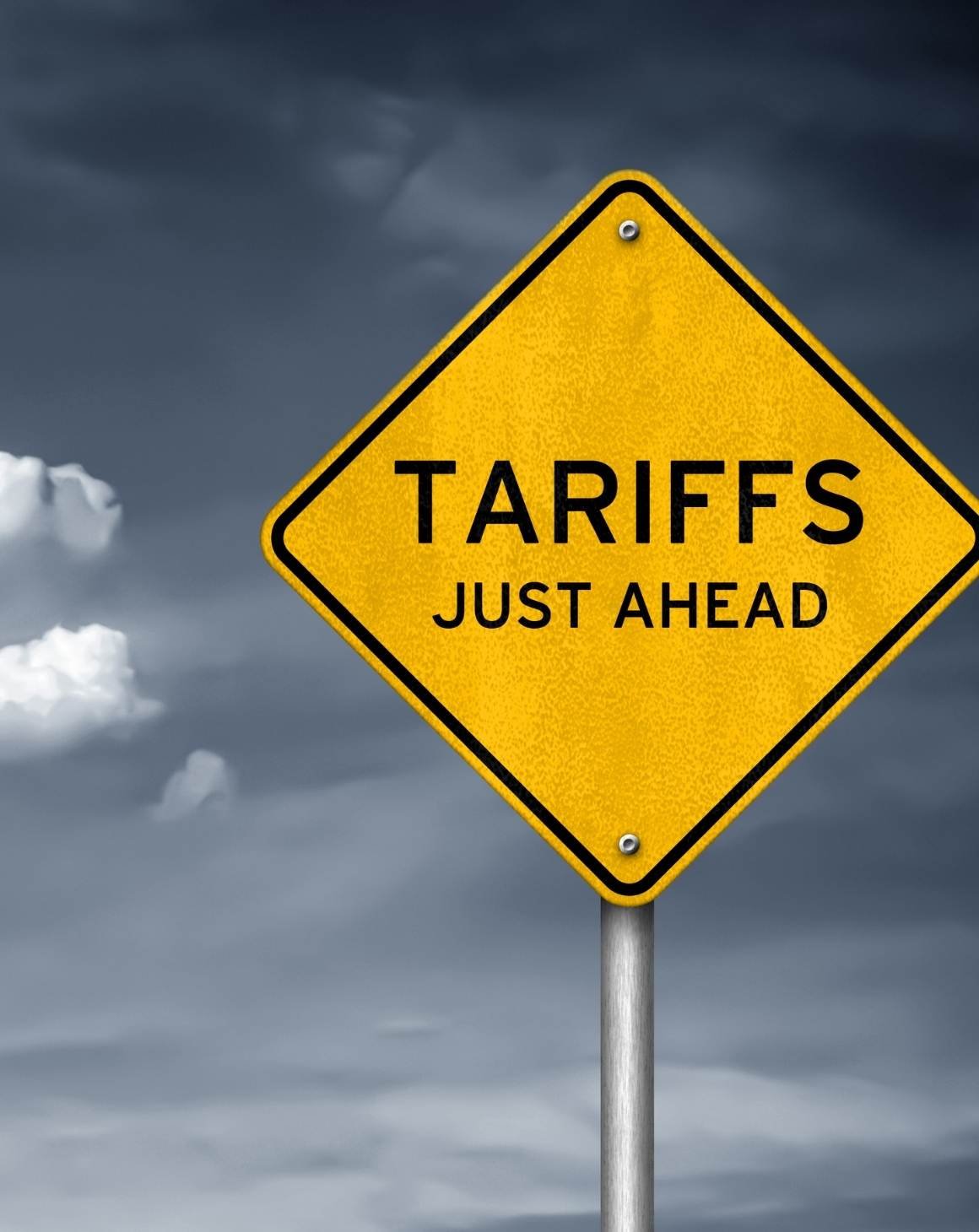Navigating the realm of Amazon selling entails acquainting oneself with a plethora of distinctive terms and abbreviations. To facilitate your journey through this intricate lexicon, we've compiled an expansive list of Amazon terms that span from A to Z. Whether you're a fledgling first-party or experienced third-party seller, this comprehensive guide aims to unravel the intricacies of Amazon's selling ecosystem.
Pro Tip: For a quick search of specific terms, make use of the Ctrl + F shortcut to navigate through the content efficiently.
Amazon Acronyms and Terminology
#
- 1st Party / First Party Seller / 1P: These refer to the entities such as brands and distributors that engage in direct sales to customers through Seller Central or to Amazon itself via Vendor Central. This direct approach grants them a unique level of control over their products and branding.
- 3rd Party / Third Party Seller / 3P: This category encompasses sellers who utilize Amazon's Seller Central to offer products, including those not necessarily of their own creation. Third-party sellers might range from individual entrepreneurs to agencies and wholesalers, contributing to Amazon's diverse marketplace.
A
- A-To-Z Guarantee: A crucial assurance mechanism for customers purchasing items fulfilled by third-party sellers. This safeguard extends to the timely delivery and condition of purchased items. In case of dissatisfaction, customers can register their concerns, triggering a review process for potential refunds.
- A+ Content / Enhanced Brand Content: This feature empowers brand owners to elevate their product descriptions beyond the ordinary. Enhanced Brand Content enables them to craft richer narratives, integrate enhanced images, and artfully position text to resonate with their target audience.
- A9 Search Engine Algorithm: The hidden engine propelling Amazon's search functionality. This algorithm dictates the products displayed in search results and their ranking order. It plays an instrumental role in ensuring product visibility and accessibility to potential buyers.
- Account Health: This encompasses a holistic evaluation of a seller's adherence to Amazon's performance benchmarks and policies. It encompasses critical aspects such as order defect rates, late shipment rates, and policy compliance, all vital for continued selling privileges.
- Ad Status: At any given moment, a seller's ad group can assume a variety of statuses, from actively running to paused, ended, archived, or temporarily out of budget. Monitoring these statuses is pivotal for effective campaign management.
- Add to Cart / ATC: This metric tallies the number of occasions a promoted product is successfully added to a customer's cart following the click of an associated ad. It reflects the effectiveness of the ad in compelling users to take a concrete purchasing action.
- Advertising Cost of Sales / ACoS: One of Amazon's favored metrics, ACoS gauges the efficiency of ads concerning their cost. Calculated by dividing ad spend by ad revenue, a lower ACoS signifies more cost-effective ad campaigns.
- Amazon Advertising Console / AAC: Amazon's designated hub for ad acquisition, configuration, monitoring, and optimization. This central platform streamlines the multifaceted process of managing ad campaigns.
- Amazon Attribution / AA: A sophisticated tool enabling the tracking and attribution of Amazon sales to external sources, such as Google, YouTube, and social media platforms. This facilitates comprehensive insight into the customer journey.
- Amazon Condition Guidelines: These are official directives outlining the varying product conditions (new, used, etc.) that are specific to different categories. Compliance with these guidelines ensures consistency across the marketplace.
- Amazon Display Ads: These ads, dynamically generated through Amazon's DSP (demand-side platform), can be showcased on or off the Amazon platform. Their programmatically managed nature marks a new paradigm in ad procurement.
- Amazon Marketing Services / AMS: This Amazon-based platform facilitates the acquisition of ads. For those entering the world of Amazon advertising, these five tips provide valuable insights into this avenue.
- Amazon Posts: A dynamic social media-like feature empowering brand owners to craft content that resonates with audiences. By emulating social media posts, Amazon Posts contribute to bolstering sales.
- Amazon Search Terms: These are the keywords and phrases that users employ when seeking products on Amazon's search engine. To enhance visibility, various free Amazon keyword tools are at your disposal.
- Amazon Standard Identification Number / ASIN: A distinct 10-digit identifier assigned to each product sold on Amazon. Remarkably, ASINs maintain consistency across all Amazon sites, ensuring seamless product recognition.
- Amazon Store: This multi-page store, hosted within Amazon, furnishes brands with a platform to promote their products and distinct brand identity. Its multidimensional nature encourages brand engagement and discovery.
- Amazon Vine Program: Designed to facilitate the acquisition of authentic reviews for Amazon listings. Positive reviews play a pivotal role in ensuring successful product launches.
- Amazon's Choice: A hallmark bestowed upon products that Amazon itself endorses based on factors like product ratings, price point, and availability. This accolade boosts product visibility and customer trust.
- Application Programming Interface / API: This serves as a conduit, enabling two distinct programs to seamlessly interact and exchange information. APIs underpin integrations that drive enhanced functionality.
- Attribution Tag: A tool for gauging ad activity stemming from third-party sources. Inclusion within the URL captures data post-click, providing insights into ad-attributed activities.
- Average Selling Price / ASP: A fundamental metric representing the average price at which a brand or company sells its products. Calculated by dividing total sales revenue by the number of units sold, ASP sheds light on revenue trends.
B
- Best Sellers Rank / BSR: A dynamic ranking metric used by Amazon to ascertain the products that merit the "Best Sellers" distinction. Various factors, including sales volume, ratings, reviews, and shipping, influence this ranking.
- Books, Music, Video & DVD / BMVD: An Amazon category with a historical legacy, comprising books, music, videos, and DVDs. This distinct category traces Amazon's initial foray into the world of e-commerce.
- Brand Protection: A proactive and reactive strategy aimed at safeguarding brands from unauthorized sellers, infringers of intellectual property, and violators of Minimum Advertised Price (MAP) policies. Establishing strong brand protection measures is pivotal to maintaining brand integrity.
- Brand Registry: A proprietary system furnished by Amazon to help brand owners safeguard their intellectual property and curate an authentic and dependable experience for Amazon customers. A crucial component of brand protection.
- Brick and Mortar / B&M: A conventional retail establishment where customers engage in in-person shopping. Despite the digital age, brick-and-mortar establishments continue to play a significant role.
- Buy Box / BB: The "Buy Box" occupies a paramount position in Amazon's landscape, signifying the seller linked to the "Add to Cart" button on a product's detail page. Securing the Buy Box significantly boosts a seller's chances of making sales.
C
- camelcamelcamel / CCC: An online tool valued for its ability to track product rankings and pricing history. Its insights aid in strategic decision-making.
- Channel: The medium through which a brand communicates with and markets to its target audience. These mediums encompass diverse platforms, including print, display, social media, video, email, and search.
- Click-Through Destination / CTRD: This refers to the specific URL to which an ad directs users when clicked. Ensuring that the landing page aligns with the ad's intent is vital for maximizing conversion rates.
- Click-Through Rate / CTR: A pivotal metric reflecting the proportion of users who clicked on an ad after encountering it. Calculated by dividing the total number of clicks by the total number of impressions, a higher CTR signifies effective ad engagement.
- Click-Throughs: These are instances where users click on an advertisement, directing them to a destination outside the original webpage where the ad was displayed. Click-throughs translate the user's interest into action.
- Cost Of Goods Sold / COGS: This aggregate encompasses all costs related to producing goods or services. It spans expenditures such as raw materials, labor, and manufacturing expenses.
- Cost-per-click / CPC: A vital metric in advertising, CPC denotes the amount paid for each click on an ad. It shapes the financial landscape of ad campaigns.
- Customer Reviews: Feedback bestowed by customers, representing their experience with a product. Positive customer reviews enhance a product's credibility and attractiveness.
- Customer Star Ratings: A quintessential element of customer feedback, star ratings allow customers to rate products on a scale of one to five stars. These ratings provide an immediate snapshot of product quality and satisfaction.
- Customs: When goods cross international borders, the recipient becomes the importer of record, necessitating compliance with the laws and regulations of the destination country. Customs duties and taxes may apply.
D
- Detail Page Views / DPV: The tally of views for a product's detail page, offering insights into its visibility and popularity.
- Dropshipping / DS: An operational model wherein a product is directly shipped from a supplier to the end customer, bypassing the intermediary step of storing inventory.
- Duty Tax / DT: An imposed tax applied to imported or exported goods and services as they cross international borders. These taxes contribute to government revenue and regulate trade flows.
E
- Early Reviewer Program: Amazon's initiative designed to facilitate the accumulation of authentic reviews from verified purchasers. These reviews are instrumental in instilling confidence among potential buyers.
- Employer Identification Number / EIN: A unique numerical code assigned by the IRS to businesses for tax identification purposes. This code is essential for legal and tax compliance.
- Entity: This term pertains to a grouping of advertisers sharing common attributes such as currency and time zone. It often aligns with a holding company account specific to a particular geographic region.
- European Article Number/ EAN: A 13-digit barcode assigned to retail products for the purpose of identification. It's a key component of product tracking and inventory management.
F
- Fulfilled by Amazon / FBA: This represents a fulfillment arrangement wherein Amazon handles the storage, packing, and shipping of a seller's products. It streamlines the logistical aspect of the selling process.
- Fulfilled by Merchant / FBM: In this fulfillment model, sellers manage the entire process, including inventory storage, order processing, and shipping. FBM grants greater control but entails more logistical responsibilities.
- Fulfillment Center / FC: These are Amazon-operated warehouses designed to house and manage inventory for sellers participating in the FBA program. They facilitate efficient order processing and shipping.
- Fulfillment Network Stock Keeping Unit / FNSKU: A distinct identifier crucial for tracking products within Amazon's fulfillment network. It differentiates products and ensures accurate storage and retrieval.
G
- Gated Category: Some product categories on Amazon are "gated," meaning that sellers need approval to list products within those categories. This measure helps maintain quality and integrity within those niches.
- Global Standards 1 / GS1: An organization responsible for generating unique product codes, such as UPCs, used to identify items. Conformity to GS1 UPCs is essential for smooth listing on Amazon.
- Global Trade Item Number / GTIN: An overarching term encompassing various numbers used to identify Amazon products, including UPC, ISBN, and EAN. GTIN plays a critical role in maintaining product accuracy.
- Gross Profit / GP: Gross profit represents the difference between total revenue and the cost of goods sold. It serves as a fundamental metric for evaluating financial performance.
H
- Hijacker: A third-party seller that unlawfully lists and sells branded products without authorization. Hijackers not only compete for the Buy Box but can also harm brand reputation.
I
- In-Stock Rate: This metric quantifies the percentage of time a product remains in stock and available for purchase. Maintaining a high in-stock rate is essential for consistent sales and customer satisfaction.
- Inventory Performance Index / IPI: This index evaluates the efficiency of a seller's inventory management practices. It considers factors like excess inventory, sell-through rate, and stranded inventory to gauge performance.
K
- Key Performance Indicators / KPIs: KPIs are quantifiable metrics that gauge the success and performance of various facets of a seller's Amazon business. They provide insights into various dimensions, from sales and advertising to customer satisfaction.
L
- Landing Page: When a user clicks on an ad, the landing page is the specific webpage they're directed to. Optimizing landing pages is crucial for converting ad clicks into tangible sales or actions.
- Listing Quality and Optimization: This multifaceted process involves refining product listings to maximize their effectiveness in attracting and converting potential buyers. Optimized listings feature well-crafted titles, compelling descriptions, relevant keywords, and high-quality images.
- Long-Tail Keywords: These are specific and less frequently used keywords that cater to niche audiences. They contribute to higher conversion rates due to their relevance to the specific needs of a target audience.
M
- MAP Violation: A Minimum Advertised Price (MAP) violation occurs when a seller advertises a product below the manufacturer's designated minimum price. Such violations can undermine brand image and erode profitability.
- Marketplace: An online platform where products are listed and sold. Amazon, as one of the largest and most influential online marketplaces, hosts a diverse range of sellers and products.
- Multi-Channel Fulfillment / MCF: Amazon's Multi-Channel Fulfillment service allows sellers to fulfill orders from other sales channels outside of Amazon. This leverages Amazon's fulfillment network to streamline order processing and shipping.
N
- Negative Feedback: This refers to unfavorable comments or reviews left by customers on a seller's account. Negative feedback could stem from issues like product quality, shipping delays, or customer service dissatisfaction.
O
- One-Day Shipping: An expedited shipping option promising delivery within a single business day. Offering this option can confer a competitive advantage to sellers aiming to meet customer expectations for swift delivery.
- Organic Rank: This indicates a product's position in search results without the influence of paid advertising. An organic rank signifies the relevance of a product to a customer's search terms.
- Out of Stock: A product is considered "out of stock" when it is unavailable for purchase due to inventory depletion. Consistently being out of stock can negatively impact sales and customer trust.
P
- Pay-Per-Click / PPC: PPC is an advertising model wherein advertisers pay a fee each time their ad is clicked. It's a fundamental mechanism in Amazon's sponsored advertising campaigns.
- Product Bundling: Bundling involves creating new product offerings by combining multiple related products together. Bundled products can provide higher perceived value to customers and confer a competitive edge.
Q
- Q4: The fourth quarter of the calendar year, encompassing the holiday shopping season. Q4 is renowned for increased sales and heightened competition among sellers vying for customer attention.
R
- Reimbursement: The process by which sellers request compensation from Amazon for inventory that is lost, damaged, or unaccounted for while under Amazon's control within their fulfillment centers.
S/T
- Seller-Fulfilled Prime / SFP: This program allows sellers to offer Prime shipping benefits to customers while fulfilling orders from their own facilities. It's an alternative to using Amazon's fulfillment centers.
- Top-Rated Seller: A designation conferred upon sellers who consistently meet Amazon's stringent performance and customer service standards. Top-rated sellers are recognized for their excellence in providing a positive customer experience.
U
- Unique Visitors: This metric counts the distinct individuals who visit a webpage or product listing. It provides insight into the reach and effectiveness of content in attracting potential customers.
V/W
- Vendor Central: Amazon's platform for wholesale vendors to sell products directly to Amazon. Vendors in this program have less control over pricing and inventory compared to third-party sellers.
- Winning the Buy Box: Achieving the Buy Box position is a competitive endeavor where a seller is prominently featured on a product detail page, increasing the likelihood of making sales.
X
- X-Ray: An Amazon feature offering insights into customer search terms. This tool aids sellers in understanding the keywords that drive traffic to their product listings.
Y
- Yield Rate: This represents the percentage of products that successfully pass quality control and are deemed ready for sale after the manufacturing or packaging process.
Z
- Zero Sum Game: Within the context of the Buy Box, this concept underscores that only one seller can secure the Buy Box for a specific product at any given time. The competitive nature of the Buy Box competition echoes a zero-sum dynamic.
Incorporating these Amazon terms into your repertoire equips you with the linguistic tools to navigate the intricacies of Amazon's selling landscape. Should you desire to amplify your Amazon sales or delve deeper into the nuances of these terms, our proficient team is primed to guide you. Do not hesitate to reach out to embark on a journey toward Amazon success and contact Blue Wheel for guidance and support.








.png)
.png)
